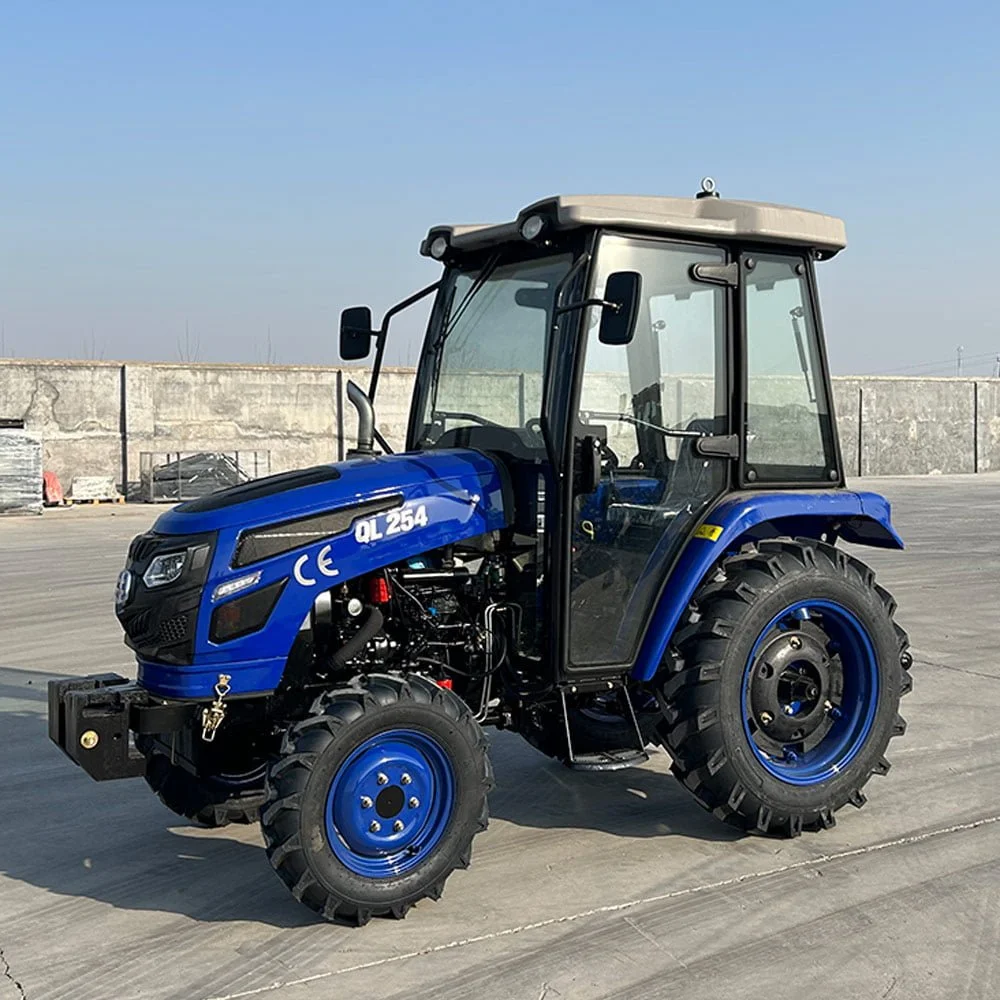Email: [email protected] Whatsapp: 8618266768780
How to Choose the Right Greenhouse Tractor
Welcome to My Blog!
Before we dive into the content, I’d love for you to join me on my social media platforms where I share more insights, engage with the community, and post updates. Here’s how you can connect with me:
Facebook: https://www.facebook.com/profile.php?id=100072217509763
LinkedIn: https://www.linkedin.com/company/74949059/admin/dashboard/
YouTube:https://www.youtube.com/@tractormanufacturer-lc5qz
TikTok: https://www.tiktok.com/@tractormanufacturer
Now, let’s get started on our journey together. I hope you find the content here insightful, engaging, and valuable.
Introduction

Selecting the appropriate greenhouse tractor is a critical decision for any horticultural operation. A well-suited greenhouse tractor enhances productivity, ensures efficient use of space, and minimizes soil compaction within the confined areas of a greenhouse. Given the unique challenges posed by greenhouse environments—such as limited space, delicate crops, and specific climate conditions—it’s essential to choose a tractor that meets these specialized needs.
This comprehensive guide will explore the key factors to consider when selecting a greenhouse tractor, including size, maneuverability, power requirements, and compatibility with various attachments. Additionally, we’ll discuss maintenance practices to keep your greenhouse tractor in optimal condition and provide a comparison of popular greenhouse tractor models. By the end of this article, you’ll be equipped with the knowledge to make an informed decision tailored to your greenhouse operations.
Key Factors to Consider When Selecting a Greenhouse Tractor
Size and Maneuverability
Greenhouses often have narrow aisles and tight corners, making the size and maneuverability of the tractor paramount. A compact tractor with a tight turning radius allows for efficient navigation without damaging crops or structures. Tractors with isodiametric versions and central articulation, such as those offered by BCS, provide enhanced maneuverability in confined spaces. Bcs

Power Requirements
Assessing the power needs of your greenhouse operations is crucial. The tractor should have sufficient horsepower to handle tasks such as soil preparation, planting, and material transport. However, excessive power can lead to unnecessary fuel consumption and increased costs. Balancing power with efficiency ensures that the tractor meets operational demands without being overpowered for the tasks at hand.
Soil Compaction Considerations
Soil health is vital for optimal plant growth. Heavy machinery can lead to soil compaction, which adversely affects root development and water infiltration. Opting for a lightweight tractor with a low ground pressure design helps preserve soil structure. BCS tractors, for example, are designed to reduce soil compaction, safeguarding soil fertility and structure. Bcs
Attachment Compatibility
Greenhouse operations often require various implements, such as tillers, seeders, and sprayers. Ensuring that the tractor is compatible with the necessary attachments enhances versatility and efficiency. Evaluate the tractor’s hydraulic system, three-point hitch category, and power take-off (PTO) specifications to confirm compatibility with existing or planned implements.
Ergonomics and Operator Comfort
Given the extended periods operators may spend on the tractor, ergonomics and comfort are important considerations. Features such as adjustable seating, intuitive controls, and low vibration levels contribute to operator well-being and productivity. Additionally, a low driving position, as seen in BCS tractors, facilitates easy access within greenhouse environments. Bcs
Comparison of Popular Greenhouse Tractor Models


Selecting the right greenhouse tractor involves comparing various models to determine which best fits your specific needs. Below is a comparison of some popular greenhouse tractor models based on key features and applications.
| Tractor Model | Engine Power (HP) | Weight (kg) | Turning Radius (m) | Notable Features | Best Applications |
|---|---|---|---|---|---|
| BCS Valiant 600 AR | 49 | 1,500 | 2.8 | Central articulation, low profile, isodiametric wheels | Greenhouses with narrow aisles and low overhead clearance |
| John Deere 2025R | 24.2 | 1,200 | 2.5 | Compact design, hydrostatic transmission, compatible with various attachments | Small to medium-sized greenhouses requiring versatile operations |
| Kubota B2301 | 22 | 1,100 | 2.3 | Lightweight, multiple PTO options, easy implement switching | Greenhouses focusing on delicate crop handling and minimal soil compaction |
| New Holland Boomer 25 | 24.7 | 1,300 | 2.6 | Super suite cab for comfort, responsive hydrostatic transmission | Greenhouses requiring enhanced operator comfort and efficiency |
This comparison highlights the diverse options available, allowing you to select a greenhouse tractor that aligns with your operational requirements and environmental constraints.
Maintenance Practices for Optimal Greenhouse TractorTractor/Farm Tractor | Tractor CompanyTractor/Farm Tractor | Tractor CompanyTractor/Farm Tractor | Tractor CompanyTractor/Farm Tractor | Tractor CompanyTractor/Farm Tractor | Tractor CompanyTractor/Farm Tractor | Tractor CompanyTractor/Farm Tractor | Tractor CompanyTractor/Farm Tractor | Tractor CompanyTractor/Farm Tractor | Tractor CompanyTractor/Farm Tractor | Tractor CompanyTractor/Farm Tractor | Tractor CompanyTractor/Farm Tractor | Tractor CompanyTractor/Farm Tractor | Tractor CompanyTractor/Farm Tractor | Tractor CompanyTractor/Farm Tractor | Tractor CompanyTractor/Farm Tractor | Tractor CompanyTractor/Farm Tractor | Tractor CompanyTractor/Farm Tractor | Tractor CompanyTractor/Farm Tractor | Tractor CompanyTractor/Farm Tractor | Tractor CompanyTractor/Farm Tractor | Tractor Company Performance

Proper maintenance is essential to ensure the longevity and reliability of your greenhouse tractor. Implementing a routine maintenance schedule can prevent unexpected breakdowns and costly repairs.
Regular Inspections
Conduct daily visual inspections to identify any signs of wear, leaks, or loose components. Pay particular attention to oil levels, tire condition, and attachment points. Early detection of potential issues allows for timely intervention and reduces the risk of major failures.
Lubrication and Fluid Checks
Regularly check and maintain appropriate levels of engine oil, coolant, and hydraulic fluids. Lubricate moving parts as specified in the manufacturer’s guidelines to minimize friction and wear. Neglecting fluid levels and lubrication can lead to overheating and mechanical failures.
Air Filter Maintenance
Greenhouse environments can be dusty, leading to clogged air filters that restrict airflow to the engine. Inspect and clean or replace air filters regularly to ensure optimal engine performance and fuel efficiency. A clean air filter prevents contaminants from entering the engine, thereby extending its lifespan.
Tire Pressure and Condition
Maintaining proper tire pressure is crucial for traction and minimizing soil compaction. Regularly inspect tires for signs of wear or damage and ensure they are inflated to the recommended pressure levels. Properly maintained tires enhance stability and reduce fuel consumption.
Seasonal Preparations
Before periods of inactivity, such as during off-seasons, prepare the tractor by adding fuel stabilizers and running the engine to circulate the additive. Store the tractor in a sheltered area to protect it from environmental elements. Periodic startups during storage help keep the engine components lubricated and prevent battery discharge.
Conclusion
Choosing the right greenhouse tractor involves evaluating key aspects such as size, horsepower, tire type, attachments, and brand reliability. By focusing on factors like maneuverability, fuel efficiency, low soil compaction, and operator comfort, you can make an informed decision that enhances both productivity and sustainability in your greenhouse operations.
FAQ
What is a greenhouse tractor?
A greenhouse tractor is a compact, maneuverable agricultural machine specifically designed to operate within the narrow confines of a greenhouse. It’s typically used for soil preparation, planting, hauling, spraying, and other tasks that require precision and care in a limited space.
Why is size important in a greenhouse tractor?
Greenhouses have restricted paths and turning spaces. A smaller tractor with a tight turning radius is crucial to move easily between beds and aisles without damaging crops or greenhouse structures.
How much horsepower does a greenhouse tractor need?
This depends on your workload. Most greenhouse tractors fall within the 20–50 horsepower range. For light-duty tasks such as tilling soft soil or hauling light loads, 20–30 HP may be sufficient. Heavier-duty tasks or larger greenhouses may require up to 50 HP.
What are some essential attachments for a greenhouse tractor?
Common greenhouse tractor attachments include rotary tillers, sprayers, seeders, mulchers, front-end loaders, and water tanks. It’s important to ensure your tractor is compatible with the specific attachments you plan to use.
Does a greenhouse tractor need special tires?
Yes. Greenhouse tractors often use turf or floatation tires to minimize soil compaction and damage to root zones. These tires also help maintain better traction in confined and potentially wet environments.
Can I use a regular farm tractor in a greenhouse?
Regular tractors are usually too large and heavy for greenhouse operations. They may damage crops, compact soil, and struggle with the limited turning space. Greenhouse tractors are specifically designed for compactness and versatility in tight spaces.
About Us
Shandong Qilu Industrial Co., Ltd. is a professional manufacturer and exporter integrating the development and production of excavators, loaders and tractors. We provide the best service, absolutely.
Recent Posts
Video demo
-1.png)
Contact Us Today!
Any question, quote or inquiry? Click the button to send message.
Qilu Industrial will always here to help.
